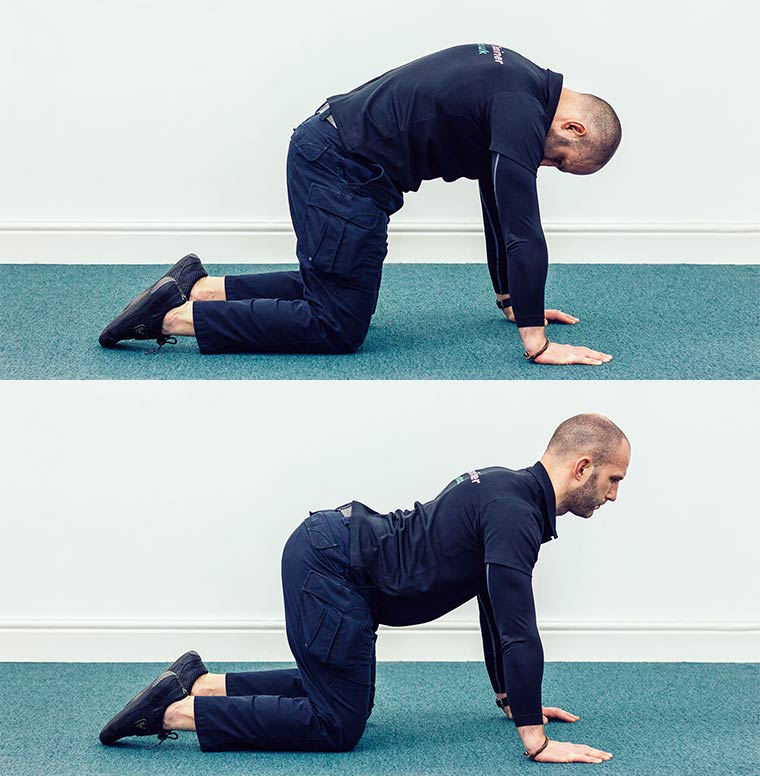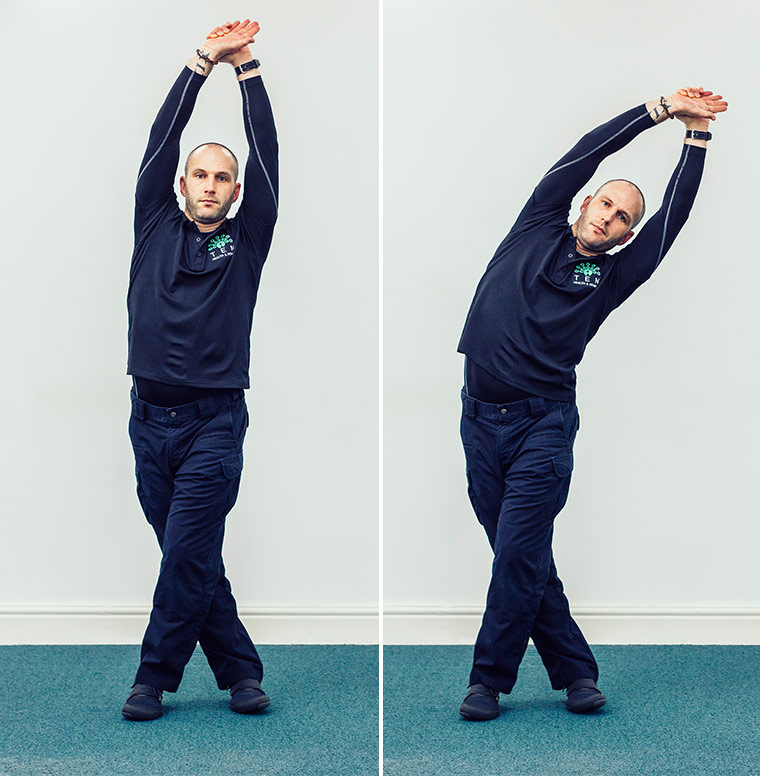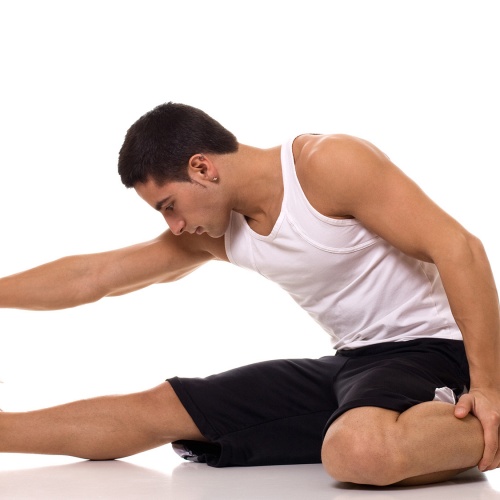Take a few minutes each day to work on your spinal mobility for a little more balance and much less pain.
Prevention is always better than cure. I’m sure you’ve all heard this many times before – especially if you’ve been coming to Ten for a while, which means ideas like prehabilitation and the importance of a good balance between quantity and quality of movement hopefully won’t be that new to you.
As is often the case, the best way to deal with back pain is to avoid creating it.
21st Century life isn’t easy on our backs
Counterintuitive as it may seem, unless it’s the result of a pre-existing condition, an accident or some other trauma, as backpain sufferers (around 80% of UK adults) we generally create our own back pain. Usually because we’re the victims of our own lifestyles.
Many of the posture related issues we see today result from the sedentary lifestyles, and the musculoskeletal impact of today’s technology, habits and fashions. Our deskbound working patterns, along with our mobiles, tablets, high heels and heavy handbags, all to easily create abnormal and harmful repetitive movement patterns. And their ability to create dysfunction, pain and injury are widely documented.
When it comes to back pain, not all forms of exercise are made equal
As much as I believe regular exercise and activity helps prevent lower back pain, I still believe that the health and fitness industry can do more to encourage people to create a little more balance within their workouts and training.
Without that balance, even if you’re working out most days, it’s pretty easy to neglect your spine, or even for your workout to cause injuries.
Many forms of exercise do not create the movement the spine needs to maintain mobility, prevent injury, and offset the impact of our sedentary and desk bound lifestyles.
For instance, the head-forward, rounded shoulders and c-shaped spine you see in spin classes and on most cyclists are hardly conducive to addressing the postural impact of a long working day hunched over a laptop.
And likewise, the shortened hip flexors, tight hamstrings, weakened glutes and core, and loss of pelvic stability that we acquire courtesy of 8-14 hours sitting a day is are the major causes of the lower back pain that affects many runners.
Similarly, other forms of resistance exercise (think weight lifting, Crossfit, etc) can actually cause back pain, especially if form and technique is poor.
Move your spine like it was made to move – in every possible way
The spine helps create varied ranges of movement, which ultimately is everything from head, shoulder and hip motion. To do this the spine moves in just about every direction: it flexes (bends), extends (lengthens), both forwards and backwards, side to side and also rotates.
Keeping a healthy spine is pretty simple – move it in as many of those directions as possible every day.
As you’d expect from someone with our focus on quality of movement as well as intensity of effort, we ensure that every Dynamic Reformer Pilates class hits all of these ranges of motion.
But if you’re not in a position to train with us every day, the following three stretches would be my prescription for the small amount of daily maintenance worth doing every day to keep lower back pain at bay.
Your Daily Prescription for a pain-free lower back and healthy, happy spine
What you need
Start by setting aside 8-10 minutes, once (or even better, twice) a day and preferably during the evening, before bed. You’ll need a little space and, dependant on the type of floor, a mat. The space required should be long enough for you you to lie down on your back and wide enough for a full snow angel! Your own body is all the equipment you need, and if your home environment is as hectic as mine, then it can be done in the living room, around the kids.
Cat and Cow Stretch (Flexion/Extension)
Let’s start with a little mobiliser. The ‘cat/cow’ stretch allows creates both extension and flexion (bending and lengthening). The stretch requires you to be on all fours, keeping a tidy technique by having your knees aligned with hips and wrists aligned with shoulders. While taking a big deep breath in, arch your entire spine towards the ceiling (like an angry cat). Whilst doing this tuck your head between your shoulders and your tailbone between your legs. We’re now going to create the polar opposite movement, by creating the ‘cow’ part of the stretch. During the following exhale, we allow the spine to gently drop towards the floor. This creates an inverted arch to the lower spine and a little extension to the upper spine. As a result of the movement, the head lifts (a little) and the hips tip forwards towards the floor. Due to the fluid nature to the exercise, it can be done in slow, repetitive motions. However, if you feel as though you are gaining a benefit from a particular phase of the stretch, then you can hold it for the desired length of time. I use this stretch a lot within my classes, as I think this creates the ‘biggest bang for your buck’. It affects/stretches large parts of the spine within a simple, time-efficient movement.
Side Stretch (Lateral Flexion/Extension)
The side stretch requires 2 sets, 1 on each side. Stand with both feet on the floor. Cross the right foot in front of the left, taking as wider stance as possible. Then extend both arms towards the ceiling, gently taking the right wrist in the left hand.
Now take a nice deep breath in, drawing the right wrist to the ceiling. On the exhalation, gently pull the right wrist over head and towards the left side. This creates a crescent or banana shape to the body (and in this case), stretching the (muscular) structures between (the right side) ribs and hips. Taking a small number of deep breaths in (and out) will enhance the stretch. However, due to the reduced lung capacity, release the stretch and reapply the stretch when necessary.
Repeat for the opposite side – i.e. with the left foot in front of the right, and the left wrist in the right hand.
Cricketer’s Stretch (Rotation)
In similar fashion to the stretch above, this requires a set on each side.
I might be showing my age, but this used to be called a Cricketer’s stretch. This stretch focuses on the rotational element of your spine, coming mainly from the part that rotates the most: the thoracic (middle) spine. Lie on your back, with your legs tucked together and your arms out to the side, at shoulder height. Bend your knees, so that your feet are flat on the floor and knees remaining together. Tip your knees to the right side while keeping your left shoulder blade in contact with the floor, and slowly allowing the knees to fall towards the floor.
Due to the nature of this being a rotational-based movement, we are likely to feel the stretch develop on the left (opposite) side of the body. (You may even feel you spine ‘crack’ a little as it rotates. This is normal.) Again, use your in and out breaths to facilitate the stretch. A quick note on this particular stretch – uf you have very little movement within this stretch, don’t force it. It may take a little time to develop your full range.
Again, repeat for the opposite side, with the knees falling towards the floor on the left hand side ensuring that the right shoulder doesn’t lift.
There is always a most efficient way to deliver a stretch. However, don’t be afraid of moving your spine within its limitations. Your body’s muscles will inform you of how far you can naturally take each stretch. Whenever you can, hold the stretch for 1-3 deep breaths in and out, as the surrounding muscular structures respond to the increased lung volume.
Good luck with your new found freedom of movement and if you’re in our Notting Hill Studio, let me know how you’re using this to your advantage!







